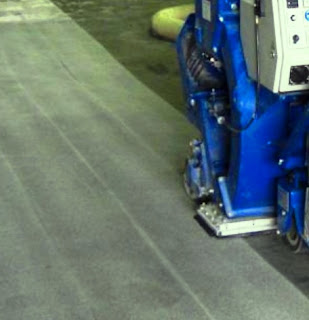Method of Surface Preparation for Concrete Repair
The steps taken just after removal of damaged or deteriorated concrete are surface preparation (prior to application of repair material). These are very important steps as concrete repair work will be satisfactory only when proper surface preparation is applied irrespective of nature, cost involved or sophistication of entire work.
In case of reinforced concrete, preparation of reinforcing steel must be included in these preparation steps. This ensures development of proper bond between rebar and replaced concrete to have expected performance of reinforced concrete.
The selection of suitable preparation method depends on type of repair and preceding operations. Different types of concrete removal methods may be applied for surface preparation but an appropriate concrete removal method may not be appropriate as a surface removed method.
Consider some removal methods that produce too smooth, too irregular or too rough concrete surface to receive subsequent new concrete, have to be treated separately and additional surface preparation methods have to be applied. Some removal methods may leave weak concrete surface. For example, when impact tools are used in this purpose, these leave microcracked concrete resulting a weak bond between existing concrete and overlying new concrete.
In this case, relatively less violent techniques should be chosen say water or sand may be used. In repair work, expected repair may be
-Surface roughing
-Producing exposure, rendering of fine or coarse aggregate
-Cleaning concrete surface
– Or Removal of thin concrete layer suspected to be damaged.
So, surface preparations of concrete are of manifold from producing abrasive cleaning of surface for applying any type of coating to deeper removal to have rough surface to achieve strong bond for structural repair.
Selection of appropriate methods is very important as cost and overall performance of repair work depends on it. Typical methods of preparation of concrete surface are as follow:
a. Chemical cleaning
b. Acid etching
c. Mechanical preparation
d. Abrasive preparation
a. Chemical cleaning:
This includes application of
-Trisodium
-Detergents
-Some proprietary cleaner of concrete.
The presence of these cleaning agents on prepared surface seriously affects repair performance. So after removal of contaminating materials; all cleaning agent should be removed. No solvent is suggested for cleaning as they may dissolve contaminants and may carry them deep into concrete surface.
In most cases, ACI committee (546R) recommended not to use chemical cleaning, only under special conditions with application of certain coatings, this method can be used.

In most cases, ACI committee (546R) recommended not to use chemical cleaning, only under special conditions with application of certain coatings, this method can be used.

b. Acid etching:
Acid etching on concrete surfaces has been used for long time to remove dirt (normal amount) and laitance. The acid applied on concrete surface successfully remove significant amount of cement paste leaving a rough surface that can received replacement material with improved bond strength. ACI 503R has recommended not to use acid and ACI 515.1R recommended to use acid on concrete when other alternatives of surface preparation cannot be used.
c. Mechanical preparation:
The equipments used in this technique are:
-Impact tools like breakers, scabblers
-Grinder
-Scarifier
With this equipment thin layer of concrete can be removed from surface and depending on removal equipment, different surfaces are obtained.
d. Abrasive preparation:
In this technique abrasive equipment are used to remove thin concrete layer. Here shotblasters, sandblasters or water blasters can be used.

